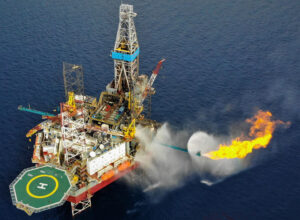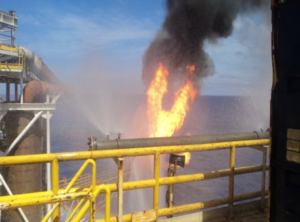Rig Cooling

Why Rig Cooling:
- Technology enables oil companies to prove reserves, and improve production clean up, safely.
- Reduces the heat radiated from well test flaring in accordance with API 521 standards and FlareSim simulations can be conducted pre-job to verify the systems design performance.
Why not traditional deluge systems for Well Test flaring?
- Deluge systems are designed to water wet, hot surfaces to cool them down (or in the case of firefighting – suppress the fire)
- Seawater is used in the deluge system and wetted surfaces can quickly corrode or cause seawater damage to electrical components
- Significant rig personnel are required on “fire” watch and to man the deluge / fire hose system during well tests
- One of OPTIMA’s busiest sectors is supplementing or even replacing existing rig deluge systems
Why OPTIMA?
Technology:
- The patented TARGE Nozzles have been performance tested by Lloyds Register for heat attenuation, wind penetration and discharge geometry. In tests conducted by Fire Officers, a hydrocarbon firewall of 1,150° C was attenuated to 7°C at a distance of 2 meters (See TARGE spec sheet).
- The EVO TARGE Boom System reduces heat radiation by 70% to 90%. This significantly reduces the heat radiation actually reaching the rig. The Rigside TARGE nozzles provide further protection and hot spots can be controlled by the Containerized Fire System (“CFS”).
- Proven, patented and Lloyds-certified technology with international experience.
People, Process and Experience:
- Trained and competent personnel
- Extensive HSEQ process and systems in place
- Global footprint of bases, local content and suppliers
- OPTIMA understand heat radiation and what it takes to perform safe well test operations.
- OPTIMA Rig Cooling creates a Hydro Shield minimizing the amount of Seawater on the rig surfaces and the potential of heat radiation greater than API 521 reaching key components of the rig or personnel.
- OPTIMA only require 1 engineer on days and 1 on nights to manage all heat radiation issues, leaving the rig personnel available for other rig related duties.

